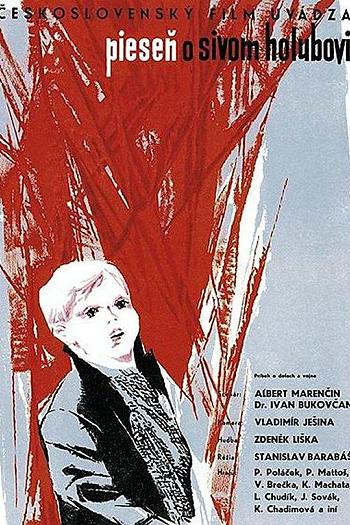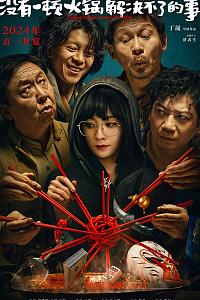
灰鸽子之歌
| 导演: | 斯坦尼斯拉夫·巴拉巴斯 |
| 编剧: | Ivan Bukovcan / Albert Marencin |
| 主演: | Radoslav Bartoník Vladimir Brecka 扬·布兹杜赫 |
| 制片国家/地区: | 捷克斯洛伐克 |
| 类型: | 剧情 / 战争 |
| 语言: | 德语 / 俄语 / 斯洛伐克语 |
| 年代: | 1961 |
| 片长: | 98分钟 |
| 豆瓣评分: | 0 |
| IMDB: | 0 |
| 影伴评分: | 0 |
剧情简介
1961年嘎纳电影节金棕榈提名,斯洛伐克新浪潮的先声。
The May 1961 premiere of The Song of the Gray Dove (Piesen o sivom holubovi, 1960) directed by Stanislav Barabas (1924-1994) marked the start of filmmakers' use of ideologically unassailable themes (in this case, the Slovak National Uprising) to tell stories that were true-to-life and yet were filmed creatively. The Song of the Gray Dove rejected the... (展开全部)
1961年嘎纳电影节金棕榈提名,斯洛伐克新浪潮的先声。
The May 1961 premiere of The Song of the Gray Dove (Piesen o sivom holubovi, 1960) directed by Stanislav Barabas (1924-1994) marked the start of filmmakers' use of ideologically unassailable themes (in this case, the Slovak National Uprising) to tell stories that were true-to-life and yet were filmed creatively. The Song of the Gray Dove rejected the narrative topics loved by Palo Bielik, who was the most creative member of the founding generation of filmmakers. By using boys as his heroes, Barabas was able to concentrate more on children’s fears, games, and happiness, which had not vanished even during the war years, rather than on reeducating viewers. Critics took notice of the film (it won the 1961 Czechoslovak Film Critics' Award together with the Czech film People Live Here Too [Vsude zijí lidé; dir. Jirí Hanibal and Stepán Skalsky, 1960) because of its intimate storytelling—six stories loosely connected by child-heroes—and its premise that children’s distorted reality can be more truthful than a so-called objective reconstruction of history. Critics also noted that the film was not without hope, despite its tragic ending.
1961年嘎纳电影节金棕榈提名,斯洛伐克新浪潮的先声。
The May 1961 premiere of The Song of the Gray Dove (Piesen o sivom holubovi, 1960) directed by Stanislav Barabas (1924-1994) marked the start of filmmakers' use of ideologically unassailable themes (in this case, the Slovak National Uprising) to tell stories that were true-to-life and yet were filmed creatively. The Song of the Gray Dove rejected the... (展开全部)
1961年嘎纳电影节金棕榈提名,斯洛伐克新浪潮的先声。
The May 1961 premiere of The Song of the Gray Dove (Piesen o sivom holubovi, 1960) directed by Stanislav Barabas (1924-1994) marked the start of filmmakers' use of ideologically unassailable themes (in this case, the Slovak National Uprising) to tell stories that were true-to-life and yet were filmed creatively. The Song of the Gray Dove rejected the narrative topics loved by Palo Bielik, who was the most creative member of the founding generation of filmmakers. By using boys as his heroes, Barabas was able to concentrate more on children’s fears, games, and happiness, which had not vanished even during the war years, rather than on reeducating viewers. Critics took notice of the film (it won the 1961 Czechoslovak Film Critics' Award together with the Czech film People Live Here Too [Vsude zijí lidé; dir. Jirí Hanibal and Stepán Skalsky, 1960) because of its intimate storytelling—six stories loosely connected by child-heroes—and its premise that children’s distorted reality can be more truthful than a so-called objective reconstruction of history. Critics also noted that the film was not without hope, despite its tragic ending.
网友分享资源
推荐/吐槽
还没有评论,你会给朋友怎么推荐?




